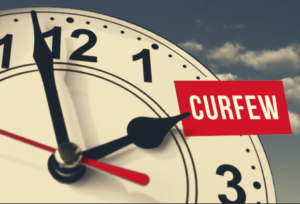
Hurricanes and why orange oranges are green in Jamaica
The more time passes since the last storm the closer we are to a hit. Harvey, Irma, Jose, Maria cleansed the Earth and nourished aquifers. They have made us ponder our mortality and exercise charity as “the greatest… is love”. Irma was regnant, “mash up everything”. Now Maria and this maelstrom. Reportage from Miami Hurricane Center, with WhatsApp visceral images in your face, is all too much. I blame Columbus!
Charlie was my childhood storm; deadliest of the 20th century. We put the rabbits, guinea pigs under the cellar; the Rhode Island hens in the kitchen, old Gleaner on the floor, and were happy. The wind howled and we hugged, but with the eye came calm; outside, mangoes on the ground like rocks in Hope River. The adults busied themselves with roof, water damage, but mango was our priority. Charlie meant no school, eating food in the ice box before it spoiled, and Mr Bruce of patty fame had freezer meltdown and blessed us with warm ice cream — kid heaven!
Tainoland records four centuries of storms thanks to the English, as in “1559 a hurricane caused severe damage to the island’s infrastructure”. (MSS, National Library of Jamaica) The 16th to 20th centuries had many, but Charlie in August 1951 (154 dead; 2,000 injured; 9,000 homeless; ships damaged; crops destroyed by wind, flood, landslide) was brutal. Wild Gilbert, in 1988, caught me with responsibility, so we prayed the storm would pass, but the kids did otherwise and God took their side. The losses were great and insurers “average clause” ruined many. The 21st century began with Michelle in 2001; moved through Ivan to Sandy in 2012, and this year we got a bly — touch wood!
Most Jamaicans have little to lose and are nonchalant about storms. Historically, the UK, America, Cuba, or Dominican Republic saved us; but recent events say we should be self-reliant. Can we build resilience in a “beggy-beggy” nation? To get a statue of Miss Lou, don’t beg; start local public subscriptions; see who cares. If we need a ship, check our neighbours Dominican Republic and Cuba, who saved us many times.
The USA usually feeds us in disaster, so let’s keep stockpiles of pulses, dessicated yams, cassava, banana flour, and fish to be food secure. Next we need policy, so our built environment norms 250-year events for which we can simulate impacts. Next the Ward Theatre, Hermitage Dam, Kingston public buildings, 350-year-old St Andrew Parish Church reflect colonial codes, so we need a building code to fit our event horizon. And note, if we pass a code today we won’t see its efficacy for 50 years. The houses that collapse now were built long ago, or self-built using poor material, workmanship, on a gully bank or fault line. Poor education cramps us as we did no technical drawing at school and are unable to research specs online. Not so a friend in the hills who built a house, grew his kids, and it stands firm; self-study works!
Housing for all is key to disaster mitigation. We have a housing deficit and will never meet demand using the extant modality. Every family needs decent housing; no rich nation has 100 per cent ownership, can poor us? We all rent until we save the deposit, but kids must live decently at all times. Cabinet should adjust its “buy a house” mantra and be inclusive as, two centuries after Emancipation and being independent for 55 years, we have only 700,000 houses. But as many here and in the Diaspora own two or more; less than half this may be owners. Many schemes are for Diaspora investors, so local ownership declines. You may never own a house. Cabinet must incentivise investors to build for rent and sale to locals or 70 per cent of you will be “of no fixed address” and get “wash weh”. Living in a house makes for resilient families. Will the Office of Disaster Preparedness and Emergency Management or National Housing Trust curate a virtual exhibition on hurricane history and housing, so we appreciate nature’s power and the ability of an educated people to survive disaster and prosper? Selah.
Green oranges, immature citrus — cry shame!
I buy local and have a high tolerance for poor quality; squiggly carrots, wingey turnips, stalky callaloo, force-ripe mangoes, but draw a line at sour, green oranges for near US$4 a bag. Will the Citrus Growers Association, Consumer’s League do something? Summer is when granddad takes his pen knife to teach kids how to ‘Eat an Orange 101’, but this year bombed. Kids say green fruits in supermarkets are not oranges. “So, Grandad, don’t you grow orange oranges here?”
In a huff I went to Miss Sandra in Papine Market — no luck. “We will bring Florida oranges next summer, deal?” I tried to fly the flag as they sang: “Yes, we have no oranges, we have no oranges at all!” These kids think twice as fast as me — rats!
We grew green Parson Brown, bright orange Valencia, ortanique and early grapefruit for the UK on the family farm and sent them to Bog Walk factory. We had Silver Chalice, the best table grapefruit; sweet, diamond hard pulp for hotels, local connoisseurs — sold by appointment.
Where is the Jamaica Agricultural Society? Does Bureau of Standards or the agriculture ministry have specs for oranges? We bought a bag in the supermarket; three oversize, five normal, almost mature, and five like large green marbles. The shelves had pears, blueberries, apples, peaches, grapes as in the books; green oranges are in no book. The kids eat guinep, mango, juneplum, otaheitie abroad. So, Minister Karl, please import some orange oranges (hold pears to pay for them) so our kids see a real one until our farmers get it right. Stay conscious!
Franklin Johnston, D Phil (Oxon), is a strategist and project manager. Send comments to the Observer or franklinjohnstontoo@gmail.com.























